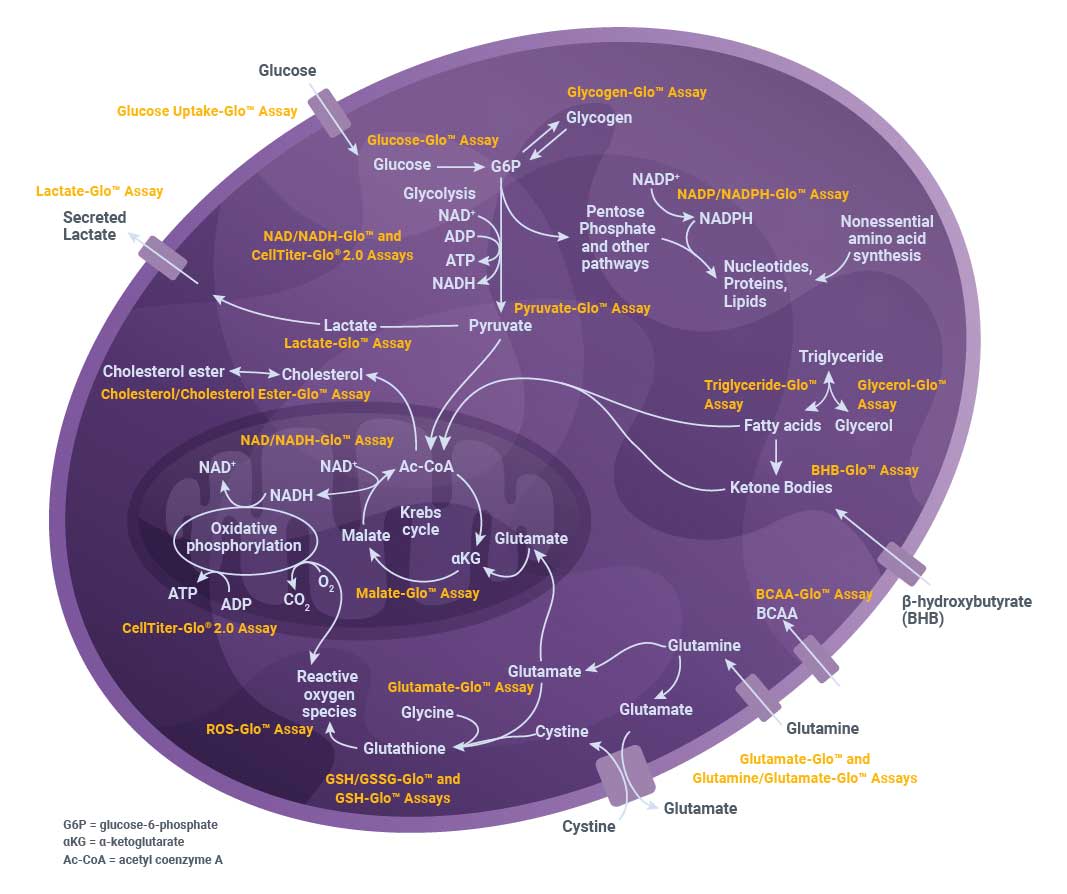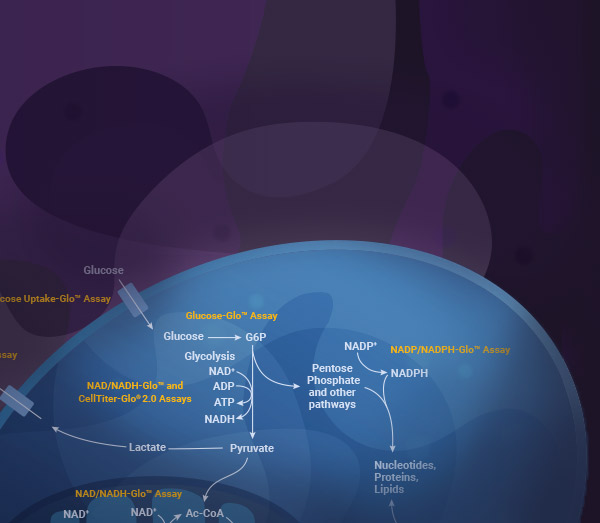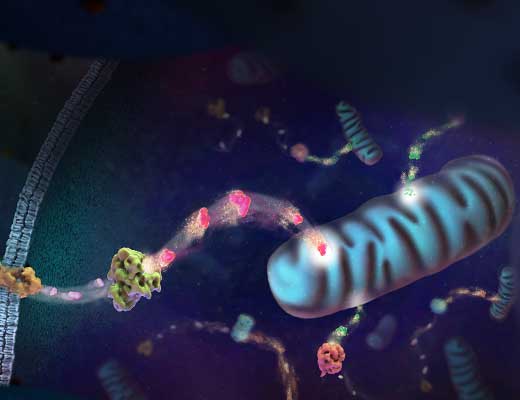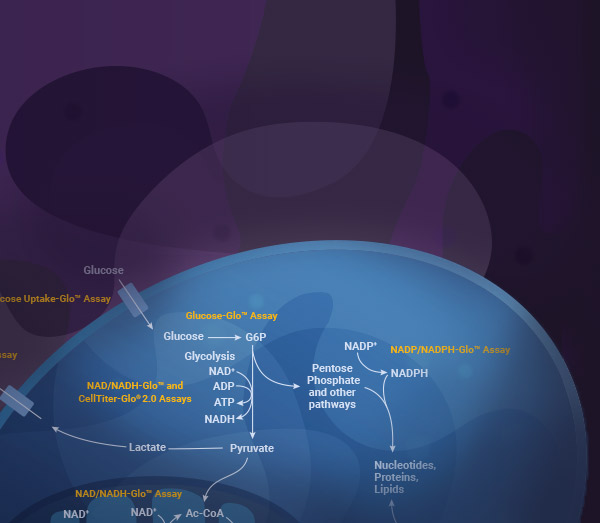Metabolic Activity Assays
Cell metabolism is critical for cellular health and function. It plays a role in many diseases and is an active area of interest in research fields such as diabetes, cardiology, immunology, cancer, inflammation and obesity. Researchers study the changing levels of various metabolites in cell systems to better understand their cellular model and interrogate changes. Metabolites are linked to cellular energy, creation of cellular building blocks, and signaling pathways.
We offer a portfolio of easy-to-use assays to measure metabolic activity, including glucose uptake, lactate, glutamine, oxidative stress and dinucleotide detection assays. These non-radioactive, bioluminescent methods for measuring metabolic changes are powerful research tools for studying cell health.

Available Assays
Amino Acid Metabolism
Mitochondrial Function
and Oxidative Stress
Looking for something not listed above? Try our DIY kits.
Metabolic Assay Product Groups
Lipid Metabolism
Bioluminescent assays for quantitating glycerol, triglyceride, cholesterol and cholesterol esters in a variety of biological samples.
Metabolite Detection Assays
Bioluminescent assays for detecting glucose, glutamate, glutamine, lactate and glycogen, and for quantifying glucose uptake.
Oxidative Stress Assays
Reagents to measure glutathione and ROS as indicators of cell health or signaling events.
Nucleotide and Co-Factor Detection Assays
Bioluminescent assays to detect ATP, NAD/NADH and NADP/NADPH in biochemical or cell-based applications.
Top Metabolism Products for Your Lab
Glucose Uptake-Glo™ Assay
Non-radioactive assay for measuring glucose uptake.
J1341, J1342, J1343
Lactate-Glo™ Assay
Biolomunescent assay that quickly detect lactate from a variety of sample types.
J5021, J5022
NAD(P)H-Glo™ Detection System
Bioluminescent assay that quantifies the concentration of the reduced forms of NADH and NADPH.
G9061, G9062
What is Cell Metabolism?
Cells must perform a balancing act of maintaining energy levels, biosynthesis of new material, and controlling reactive oxygen species created by energy generation. Promega’s portfolio of metabolic assays help researchers understand this balancing act performed by cells, along with changes in metabolic pathways due to therapeutic treatments.
Monitoring metabolites in cell culture medium can provide information about cellular metabolic pathways. Glucose consumption and lactate secretion can serve as indicators of glycolysis, while glutamine consumption and glutamate secretion provide information about glutaminolysis. Glucose uptake rate can also be evaluated, related to diabetes, cancer and immune cell activation.
Nicotinamide adenine dinucleotides are abundant soluble cofactors that undergo reversible oxidation and reduction in major metabolic pathways. They can tie metabolic pathways to transcriptional control, epigenetics and cell signaling as cells switch from a normal metabolism to a cancer cell (proliferative) metabolism. These dinucleotides work in pairs, either phosphorylated NADP and NADPH or unphosphorylated NAD and NADH. Each pair has distinct functions. Assay kits can be used to measure the total, oxidized and reduced versions of the nucleotides. ATP, the abundant nucleotide used for intracellular energy transfer can be measured with the CellTiter-Glo® assays.
Oxidative stress level as a cellular response is linked to cellular metabolism. Cells generate Reactive Oxygen Species (ROS) as a result of increased metabolism or as a stress response. Glutathione (GSH), an antioxidant, is used to mitigate the damage of ROS. Oxidative Stress assays that measure ROS or GSH (total and reduced) levels are related to the metabolic state of the cell.
Bioluminescent, plate-reader based assays to monitor these processes give researchers the ability to measure many samples with simple sample processing requirements. The sensitive assays conserve starting samples, which may be cells grown in monolayer culture or 3D models, tissues, or other biological samples.



